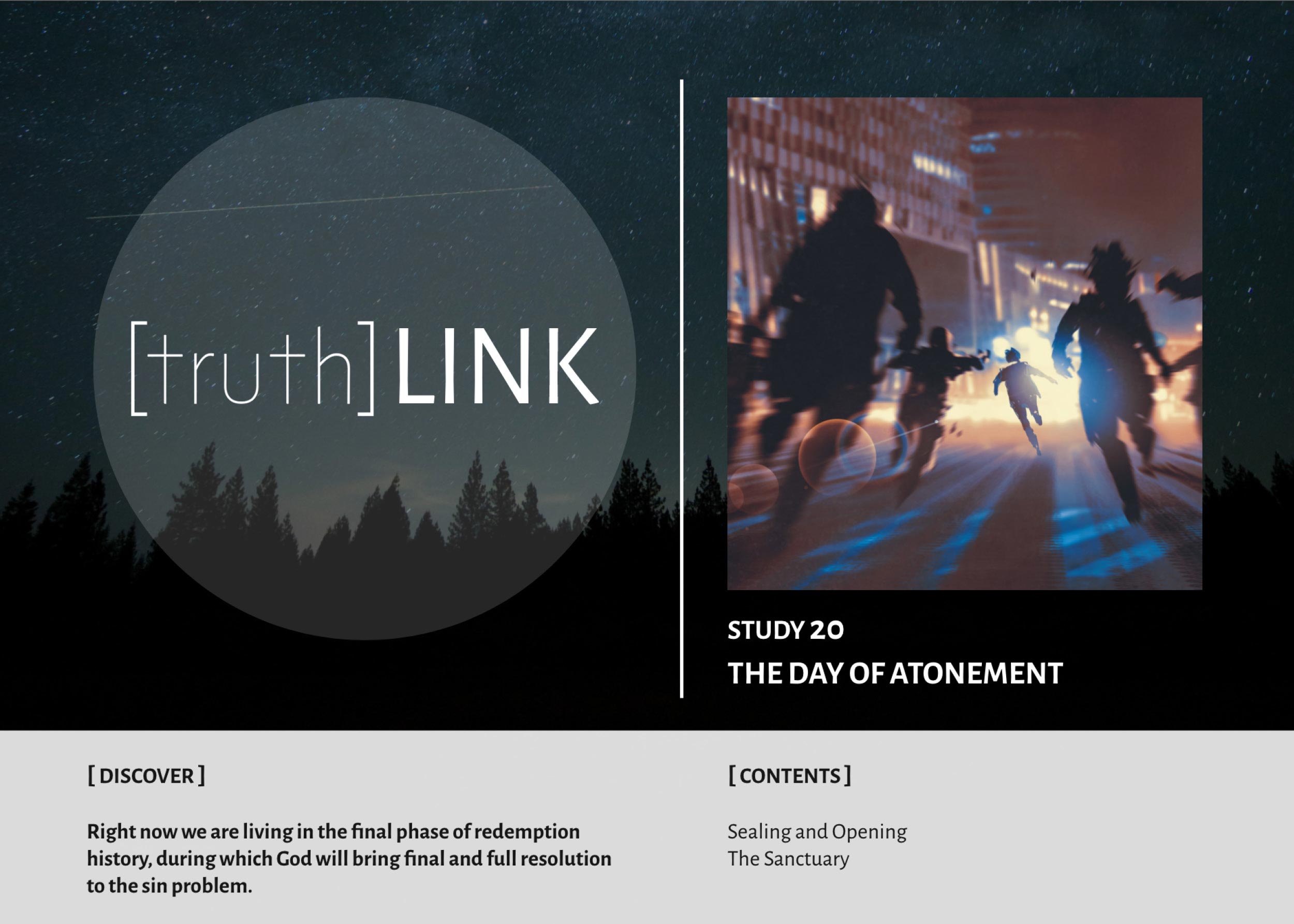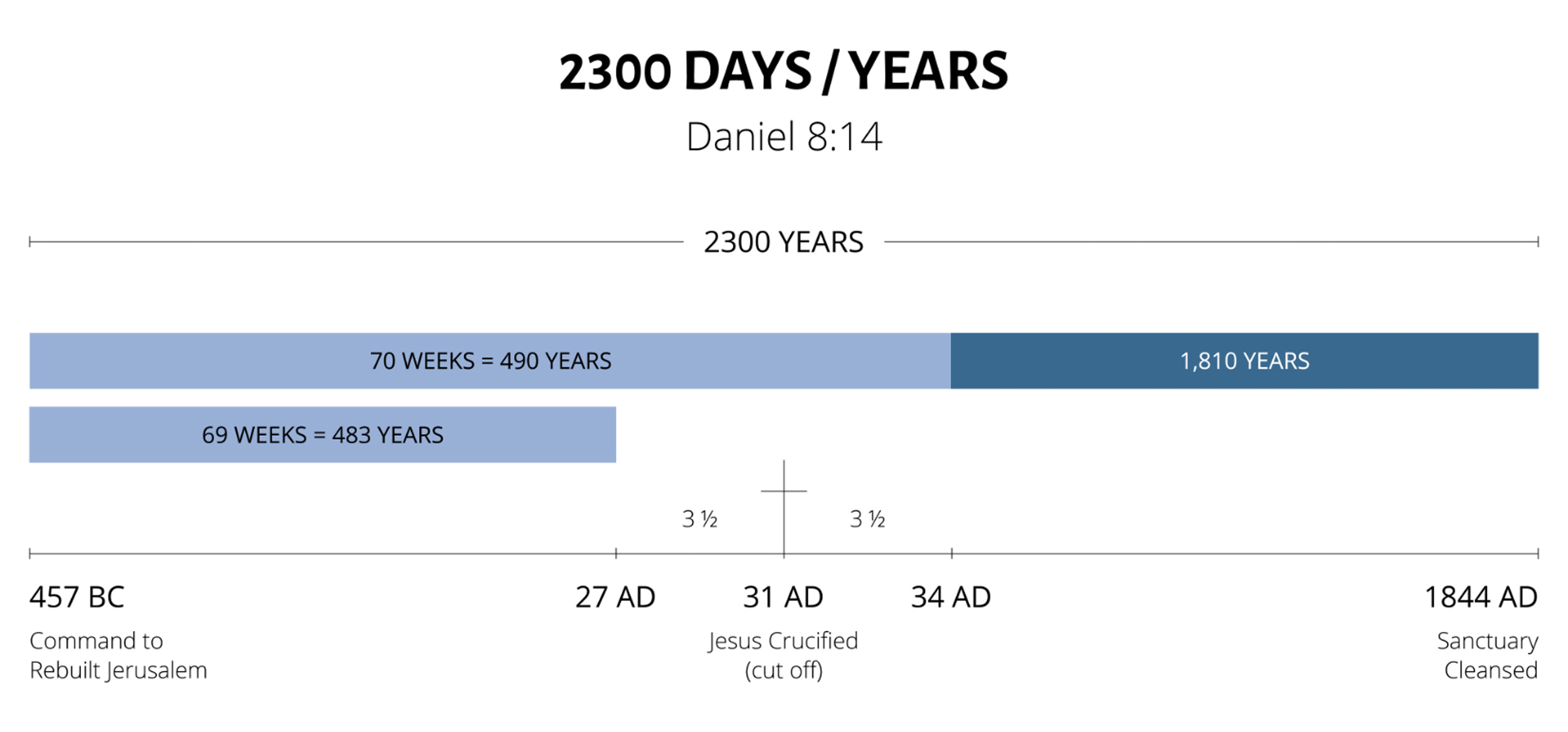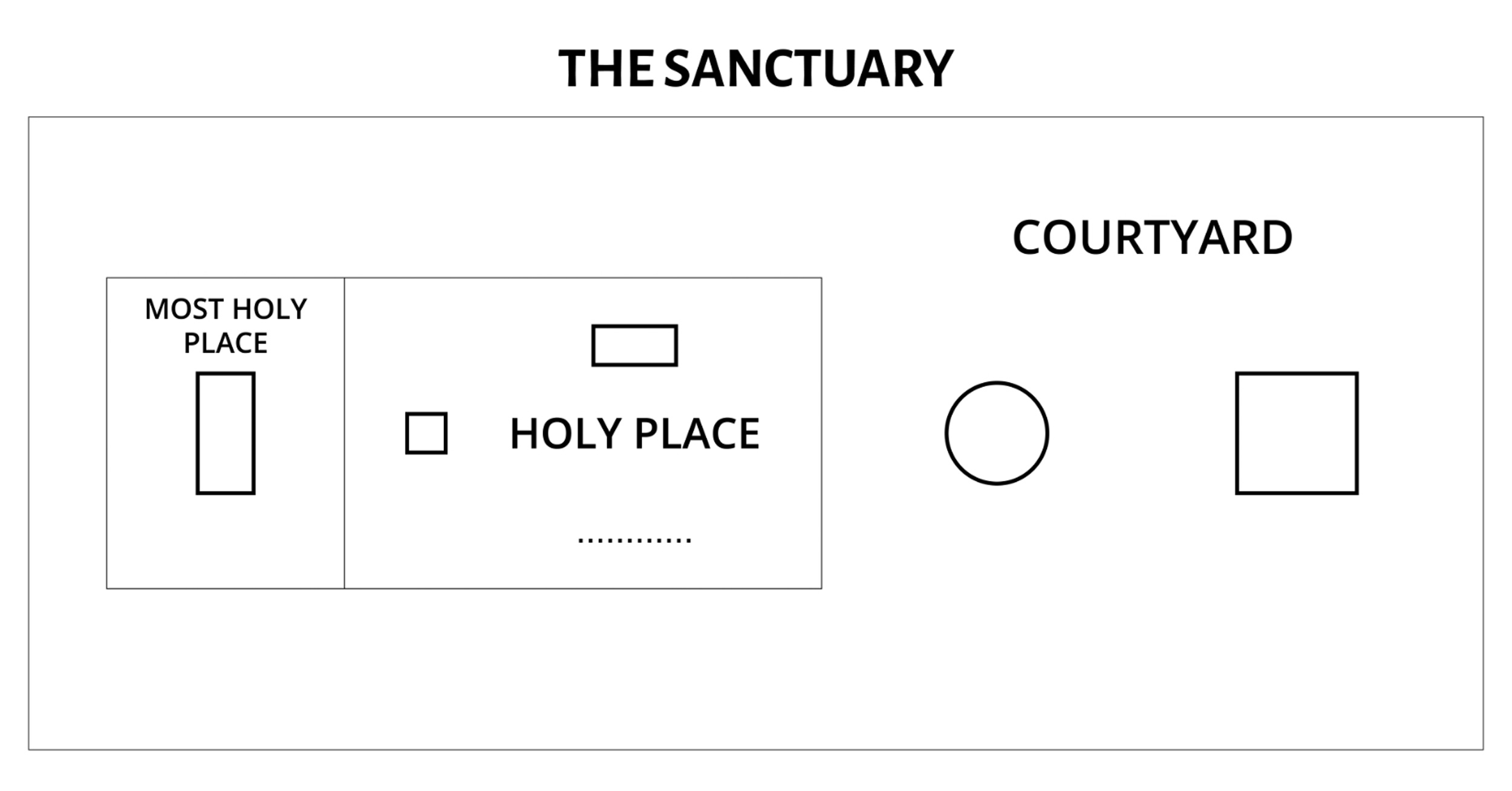
Sealing and Opening
God is on a constant communication quest because He wants us to know what He’s up to in human history so we can be involved. In this study we will consider a Bible prophecy about God’s current activity that invites our engagement.
Begin by reading Revelation 10, and then compare Daniel 8:14, 26; 12:4-10.
A correlation of these passages makes it clear that the two prophets, though separated by nearly 600 years, were addressing one and the same topic: the sealing and opening of Daniel’s prophecies. One of Daniel’s visions included a 2300-day time prophecy, which was of particular interest to him:
“For two thousand three hundred days; then the __________________ shall be ____________” (Daniel 8:14).
When Daniel prayed for understanding of the vision he was told by an angel that it pertained “to many days in the future” rather than to his own time. “Therefore seal up the vision,” the angel said. Later, Daniel was again told, “Shut up the words, and seal the book until the time of the end; many shall run to and fro, and knowledge shall be increased.” This odd terminology refers to an ancient method of study. The scrolls of Scripture were unrolled on long tables and the student would “run” back and forth comparing scripture with scripture. The angel is telling Daniel that his sealed “book” will be opened to the understanding of “many” who will search the scriptures during the end-time period of history.
The same angel that told Daniel to “shut” his book appeared to the apostle John with “a little book open in his hand” (Revelation 10:2). Then the angel instructed John to enact a prophecy:
“Go, take the little __________ which is ________ in the hand of the angel. . . Take and ______ it; and it will make your stomach ___________, but it will be as _________ as honey in your mouth” (verses 8-9).
At the end of time the book of Daniel would be eaten, or studied, and its sealed prophecies would be understood. And yet, there would be something both sweet and bitter about the experience.
Just as foretold, during the first half of the 19th century a unique Bible study phenomenon emerged on the scene of history with a specific interest in comprehending the prophecies of Daniel. “Many” were, indeed, running “to and fro” in Scripture. A key figure at the forefront of the movement was an American Baptist preacher named William Miller. Many preachers around the world understood what is commonly referred to as the day-for-a-year principle of prophetic interpretation (Ezekiel 4:6; Numbers 14:34). They knew that the 2300 days of Daniel 8:14 represented 2300 years. Miller noticed that the 70-week prophecy of Daniel 9 was actually a breakdown of events that would occur within the first 490 years of the larger 2300-year period (see study guide 6). This meant that the event given by Gabriel to mark the beginning of the 490-year prophecy also marked the beginning of the 2300-year prophecy. That event was “the command to restore and build Jerusalem,” which was issued by the Persian King Artaxerxes in 457 BC (Daniel 9:25; Ezra 7:11-12). With that starting date, Miller realized that the 2300 day prophecy would end in 1844.

This meant that something of extreme prophetic importance was going to happen in 1844. But what? William Miller and Bible students around the world concluded that the event to be expected must be the second advent of Jesus. The message went around the world, “Jesus is coming in 1844!” But He didn’t come. Just as John foretold, the experience that began as “sweet in the mouth” turned out to be “bitter in the belly.” The devastating experience became known as, “The Great Disappointment.” Miller and the Advent believers were wrong, plain and simple. It was all a huge mistake. Or was it?
READ REVELATION 10:11 AND DISCUSS WHAT THIS MEANT FOR THE DISAPPOINTED ADVENT BELIEVERS AND WHAT IT MEANS FOR US TODAY:
“And he said unto me, Thou must __________ __________ before many peoples, and nations, and tongues, and kings” (Revelation 10:11, KJV).
The Sanctuary
A handful of scattered advent believers regrouped and began to retrace their steps through Scripture. Two things became clear:
First, they had assumed that the cleansing of the sanctuary foretold by Daniel must point to the cleansing of the earth by fire at the second coming of Jesus. But now they saw that there was no biblical evidence to suggest that the earth was the sanctuary. That was their mistake. The time for the prophecy to be fulfilled was undeniably solid, but they had expected the wrong event.
Second, they discovered that the ancient sanctuary built by Israel was a symbol of the true tabernacle in heaven, where Jesus ministers as our great High Priest. Read and discuss Hebrews 8:1-5 and Psalm 102:19 to discover this connection for yourself. They discovered that the sanctuary served as a symbolic outline of the plan of salvation that would unfold in three historical phases: (a) the life and death of Jesus, correlating to the Courtyard. (2) the resurrection and ascension of Jesus as our mediator to minister the benefits of His atoning sacrifice, correlating to the Holy Place. (3) the final resolution of the sin problem by Jesus as our High Priest, correlating to the Most Holy Place.

In the ancient symbolic sanctuary ceremonies, the daily sacrifices would be slain in the Courtyard and burned on the altar, pointing forward to the sacrifice of Christ. Some of the blood from each sacrifice would then be taken into the Holy Place and sprinkled seven times on the veil before the Most Holy Place, symbolizing that the sacrifice of Jesus would provide continual atonement after His resurrection.
And then came the grand climax of the entire symbolic system.
On the tenth day of the seventh Jewish month, called Yom Kippur or the Day of Atonement, the high priest would enter the Most Holy Place to make a final application of the atonement with the blood of a sacrificial goat. Then he would send away a second goat, called “the scapegoat” or Azazel, into the desert, thus signifying the final end of evil and its instigator, Satan.
So it was that the Day of Atonement ceremony pointed forward to the final resolution of the sin problem. Daniel’s prophecy indicted the time when the great antitypical Day of Atonement would begin, and John foretold the bittersweet experience of the Bible students that would make this discovery. The Day of Atonement and the cleansing of the sanctuary, they realized, were one and the same event. In 1844 Jesus had entered into the final phase of the plan of salvation. He was now presiding as High Priest over the final resolution of the sin problem preparatory to His second coming.
[CONNECT]
As our heavenly High Priest, Jesus ministers for us as the “one Mediator between God and man” (1 Timothy 2:5).
There are life-transforming benefits available to us as we look to Jesus Christ as our High Priest. He “sympathizes with our weaknesses” and invites us to “come boldly before the throne of grace, that we may obtain mercy and find grace to help in time of need” (Hebrews 4:15-16). He opens the way for us to enter by faith to “the Presence behind the veil,” into a sense of “strong consolation” before God (6:18-19). He accomplishes in us the reality of the new covenant by writing His law in our minds and hearts and freely forgiving “our sins and lawless deeds” (8:10-12). He cleanses our “conscience from dead works”—works rendered from a sense of guilt in order to earn salvation—so that we can “serve the living God” free from all sense of need to earn His favor (9:14). And by virtue of His “once for all” sacrifice for all sin He has entered the Most Holy Place for us all, “having obtained eternal redemption” so that we can stand in “the judgment” knowing that He has “put away sin by the sacrifice of Himself” (Hebrews 7:27; 9:12, 26-28).
[EXPERIENCE]
Knowing that we are living in the Day of Atonement is both sobering and exciting.
It is my purpose to lodge all my hope for confident standing before God in the sacrifice Jesus made on my behalf. I look to Him alone as my Mediator and High Priest, inviting Him to cleanse my conscience from all sense of need to merit God’s favor and I ask Him to write His Law of love in my mind and heart. Knowing and believing His great love for me is what gives me boldness in the Day of Judgment (1 John 4:16-18).
Phone 1300 300 389